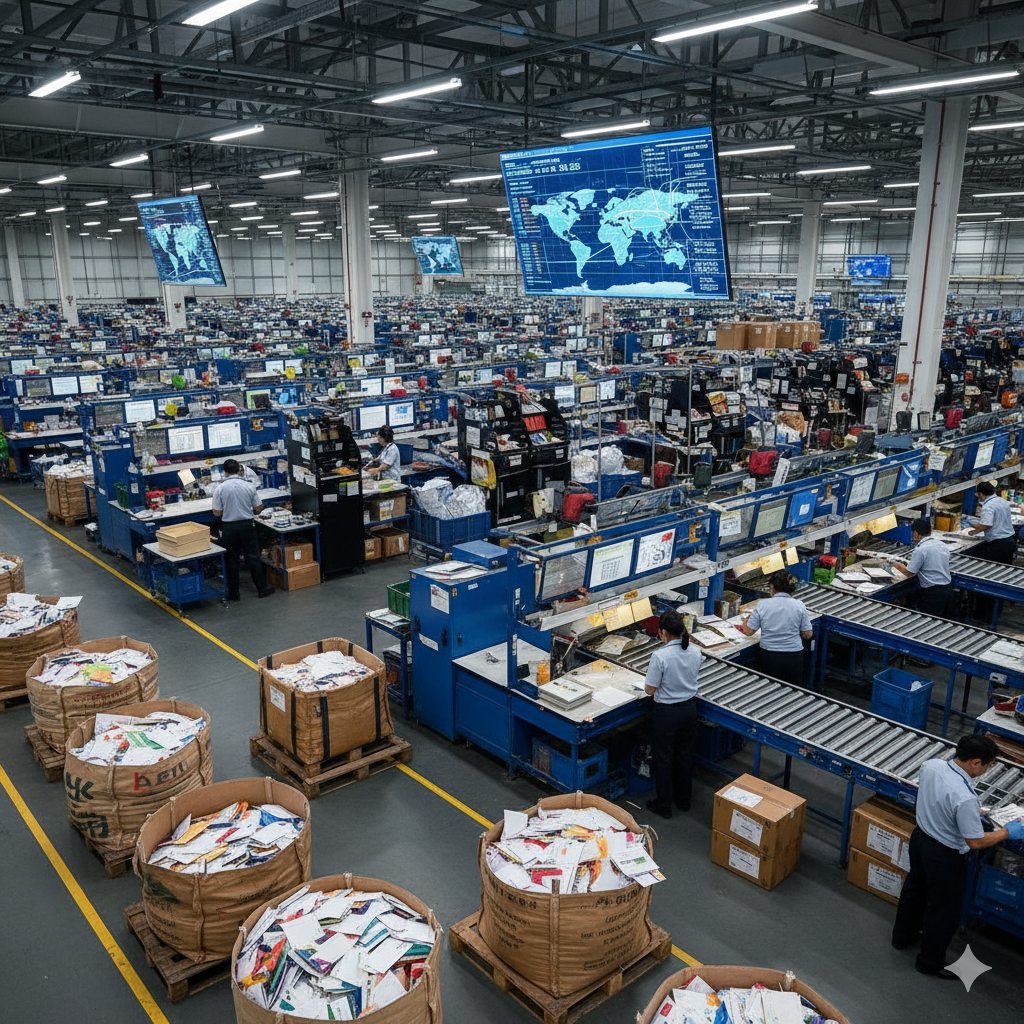Your TikTok finally popped off, or your email campaign just crushed it. Suddenly you’re staring down 10,000 orders, and your direct-to-consumer shipping operation isn’t ready.
Whether you’re a small brand with a viral product, a growing eCommerce business expanding nationally, or a retailer shifting to direct-to-consumer fulfillment, scaling your DTC shipping the right way is essential. To be successful, you don’t need a perfect business forecast; you just need an operation that can flex when the orders flood in.
Here’s what our shipping experts think you should focus on if you want to survive the next 10,000 orders without overwhelming your team or losing customer trust.

Tips to Prepare Your Operations for Growth
1. Fix Fulfillment Bottlenecks Before They Break
Your process might hum along at 100 orders a day, but can it handle five times that? Growth has a way of exposing the weak spots, and what feels efficient now can turn into chaos under pressure.
Walk through your entire fulfillment workflow and ask yourself questions. Where do things slow down? Are picking routes optimized? Do orders pile up at packing? Even small issues like label printing or order batching can compound quickly.
The key here is to avoid waiting for a blowout. Track metrics such as average fulfillment time and delay patterns by region. Bottlenecks rarely fix themselves, but if you catch them early, you won’t have to scramble later.
2. Stop Letting Packaging Slow You Down
Packaging might seem like just a box, but it’s also a potential slowdown. At scale, bad packaging decisions can eat into margins fast.
Oversize boxes rack up dimensional weight charges, and fragile packaging can lead to returns and damage for both your products and your reputation.
Start by auditing your most popular SKUs. Are they packed efficiently? Do you have three box sizes when one would do? This is a great place to standardize where it makes sense, and simplify wherever you’re still manually filling or wrapping.
3. Automate Shipping to Stay Scalable
If you’re still printing shipping labels by hand or copying tracking numbers into a spreadsheet, you’re already behind. Manual tasks may have worked when you were fulfilling 20 orders a day, but they don’t scale, and they definitely don’t leave room for mistakes.
Automation is your safety net. It ensures every shipment gets the right carrier, the right label, and the right tracking update without tying up your team. That means a lot less stress when things start moving fast. The brands that scale aren’t working harder. They’re automating smarter.
4. Don’t Let Your Team Burn Out at 10,000 Orders
High order volume puts pressure on every part of your business. When the number of orders goes up, your customer service teams can get bogged down with shipping questions, and inventory teams may struggle to keep up with changes.
It’s important to avoid pushing your team to the point where things start breaking. If you’re scaling, your systems need to do the same. That means fewer manual tasks and implementing workflows that make it easier to catch issues before they become crises. If your people are maxed out now, 10,000 orders won’t feel like success; it’ll feel like a mess.
5. Ditch the Carrier Juggling Act
It’s tempting to think that managing multiple carrier accounts yourself will save money, but it often creates more problems than it solves. You can be left with a patchwork of shipping rates and a pile of dashboards nobody has time to check.
Managing that complexity in-house quickly turns into a full-time job. So how do you avoid adding a new title to your résumé while still making the best choices for your business? Streamline. Evaluate which carriers consistently deliver on time. Then look for opportunities to consolidate under one roof—ideally with a partner that can optimize routing for you.
6. Don’t Let Returns Derail Growth
Returns aren’t necessarily a failure; often they’re just part of growth. The more you ship, the more you get back. And while most brands plan for volume on the front end, they often forget what happens when all that product starts coming back.
Returns can create issues in ways you didn’t expect, such as a spike in customer emails or inventory sitting in limbo because no one’s sure what to do with it. You feel it in the slowdowns and the way your team starts treading water instead of moving forward.
Instead of reacting, build a plan. Give customers a clear path to initiate returns, and consider prelabeling returns packaging. Don’t leave your team guessing, either. Create a clear system that defines how returned items are sorted and restocked before the rush hits.
Returns will always be part of the equation. The question is whether they’re quietly handled in the background or stealing time and focus from the rest of your operation.
7. Know Your KPIs
You can’t grow on instinct alone. “We think we’re on time” isn’t a real metric and won’t hold up when your operation scales.
Start tracking the numbers that matter:
- On-time delivery rate
- Cost per shipment
- Return rate by SKU
- Failed deliveries by destination state
- Exception handling time
If you’re not measuring performance across your DTC shipping, you’re flying blind. Visibility becomes your insurance policy when the volume spikes.
8. Stay Ahead of Regulatory Shifts
Shipping rules don’t stand still. What worked last month might now require a different form or a completely revised carrier policy.
Whether you’re expanding to new regions or shipping across borders, the fine print matters. Common pitfalls include:
- Last-mile delivery restrictions
- Postal code blocks
- Carrier coverage changes
- Compliance rules that shift without warning
Scaling means dealing with more variables and more risk. Make sure your logistics setup (and your shipping partner) can flex with those changes in real time, not weeks after they’ve disrupted your flow.
9. Know That Your Growth Is Only As Good As Your Logistics Partner
It’s easy to focus on the flashy stuff when you’re scaling, but the real test of growth happens in the background. That’s where things either run smoothly or start to fall apart.
If your logistics partner isn’t built to handle that pressure, you’ll feel it everywhere else. A strong partner helps you stay ahead of the curve. They bring clarity when things get messy and structure when volume spikes.

In a high-growth moment, that kind of support can be the difference between momentum and burnout. It’s important to choose wisely.
Why DTC Brands Scale Faster with ePost Global
At ePost Global, we help fast-moving brands turn shipping from a liability into a growth engine. Whether you’re launching a direct-to-consumer program or navigating your first viral spike, we know what it takes to scale and we’re built to support it.
Our team works with emerging DTC brands and established retailers to:
- Route shipments smarter across regional and international carriers
- Surface real-time data through centralized dashboards and performance tools
- Streamline returns workflows, from automation to inventory recovery
- Adapt to state- and country-specific regulations and shifting delivery zones
And we do it without forcing you to hire a logistics team of your own.
When you partner with ePost, you get a growth ally that helps you stay lean, fast, and focused.
Ready for the Next 10,000 Orders?
The next surge won’t wait for you to catch up. If your DTC shipping operation isn’t built to flex, you’ll hit a ceiling faster than you think.
Scrambling through growth only works for so long. Long-term success requires systems that scale.
ePost Global helps you build for what’s next, not just what’s now. Let’s future-proof your DTC shipping operation so you can grow without limits.
DTC Shipping FAQ
What’s the difference between DTC and working with wholesalers or a distributor?
With direct shipments to customers, you control the brand experience end to end. Unlike working with a wholesaler or distributor—where they manage inventory and fulfillment—DTC shipping puts all logistics, customer service, and compliance in your hands.
Can I ship to any state or country?
Not necessarily. DTC shippers must navigate a patchwork of shipping laws and restrictions that vary by state. Some states limit out-of-state deliveries entirely or impose tight regulations on direct shipments, especially for regulated goods like alcohol or supplements. Always validate coverage by destination state before expanding your footprint.
Do I need a shipping license for DTC shipments?
It depends on the product category and the states you’re shipping into. Some states require shippers to obtain a direct shipping license or register with tax authorities. Others require proof of a permit or compliance with local laws around excise tax or labeling. Always confirm the requirements before sending goods across state lines.
Do I need third-party tools for regulatory compliance?
If you’re selling into multiple states, yes. Compliance for DTC shipping is a moving target. Third-party tools can help automate tax collection, manage excise tax filings, and monitor out-of-state shipping restrictions in real time. ePost Global integrates with platforms that simplify this for shippers operating at scale.
How do I handle returns for DTC shipments across multiple states?
Returns management is often overlooked, but it’s critical, especially when shipping out of state. Your return policy must align with state-level shipping laws and consumer protection rules. Tools that allow for pre-generated return labels, automated routing, and inventory reconciliation can keep the process streamlined, even at scale.
What are the tax implications of DTC shipping?
Depending on the product and where it’s shipped, direct-to-consumer shippers may be responsible for collecting and remitting excise tax or sales tax. Tax obligations can vary widely across states, so make sure your system accounts for destination-based rules and tracks filings accordingly.




